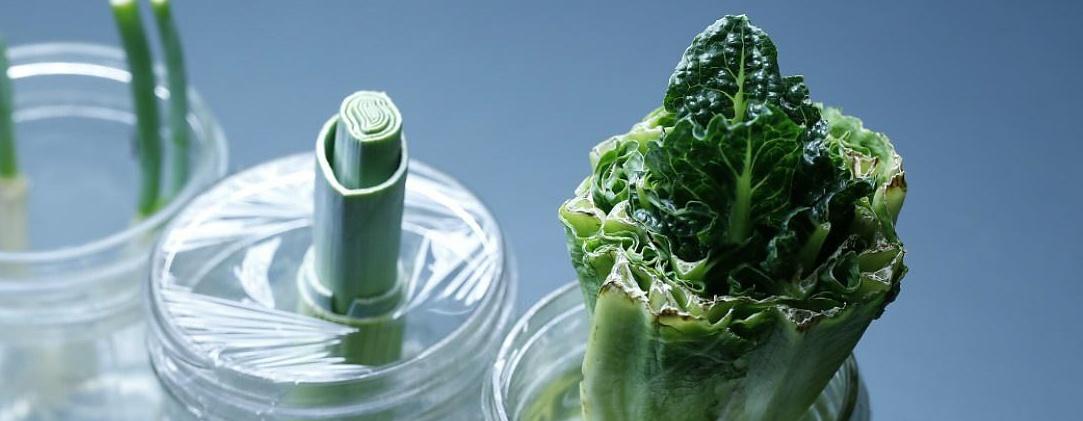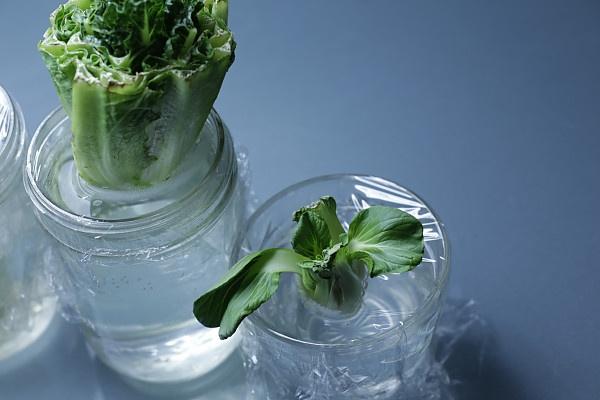Step 1: Choosing Your Veggies
There are many lists floating around the internet with fruits and veggies you can grow from kitchen scraps, but many lists exclude regrowing time and difficulty. Regrowing a pineapple, for example, is far less expeditious and less practical than growing a celery stalk—which only takes a week or so. You may have to wait three or more years before seeing your first pineapple fruit! So, we have compiled a comprehensive list of plants in three separate categories: Easy, Intermediate, and Advanced. We have also included the grow time, care requirements, and what to actually expect.
Plant List
We decided to stick to the easy stuff. We chose green onion, leek, bok choy, and romaine lettuce. These were all listed as easy and fast to grow and we wanted to start with the basics. Choose your vegetables based on what you’ll actually want to eat and use for recipes, as well as what’s realistic for you to grow in your home. But this comprehensive list can help you decide what to grow in your home.
Easy:
Grow time 5-7 days to full regrowth with a high success rate:
- Celery
- Leeks
- Green onion
- Lettuces:
- Romaine
- Iceberg
- Swiss chard
- Kale
- Bok Choy
- Napa cabbage
Grow time 1-2 weeks for greens to appear, but several months before harvest:
- Potatoes
- Sweet potatoes
- Peppers
Medium:
Grow Time: 7-10 days for greens to appear, but several months before harvest:
- Garlic
- Onion
- Ginger
- Carrots *Note: Won’t actually grow more carrots, but will grow a plant that will produce seeds which you can plant!
Grow Time: 14-21 days for leaves and roots to appear, but several months before harvest:
- Lemongrass
- Tomatoes (which are actually a fruit, we know) are typically regrown from slices.
Advanced:
Grow Time: 6-8 weeks for roots, *but several years for fruit
Grow Time: 2-3 weeks
Deciding Your Lighting And Growing Conditions
Water
First, be sure to change your water every day. Stagnant water from decomposing plant matter is stinky and can be a potential health hazard. Second, be sure your water is dechlorinated and either "hard water" or treated with reverse osmosis. High amounts of minerals like calcium and sodium chloride found in soft water can eventually kill your plants and will most definitely stunt growth. We encountered this problem during our office project. A small amount of soft water is fine, but try to use hard water or reverse osmosis water if possible.





.png)